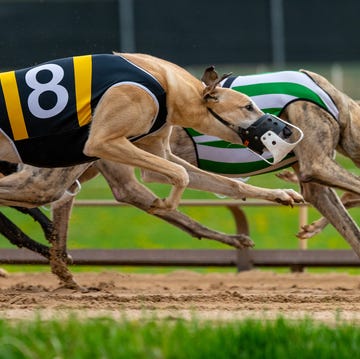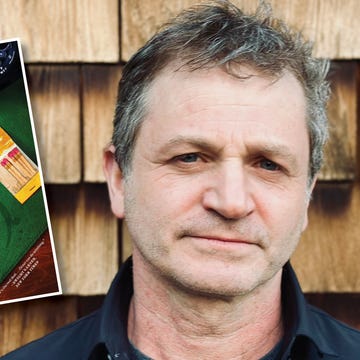Ever hear singing in the Santa Clarita Valley around sunrise? It could just be the creatures within the Gibbon Conservation Center communicating with one another and marking their territory. The GCC is the only organization worldwide to house all four genera of gibbon, including endangered and critically threatened species. Alta Journal contributor Louise Farr takes us into the gibbons’ global plight and the work being done in Southern California in her latest, “A Safe Place for Endangered Apes.” Alta Live, of course, wants to know more. We’ve invited GCC director Gabriella Skollar to introduce us to these fascinating apes, explain why her organization’s work is so devoted to helping gibbons thrive and survive, and detail why these primates are so prized—especially by those who seek to exploit these vulnerable animals.
About the guest:
Gabriella Skollar has been working for the Gibbon Conservation Center (GCC) since 2005. The mission of the GCC is to promote the conservation, study, and care of gibbons through public education and habitat preservation. The GCC houses 40 gibbons, representing five of the 20 species, one critically endangered. Skollar graduated in 2004 with a master’s in biology from the University of Szeged in Hungary. She first became involved with gibbons when her university adviser asked her to record Kaszat, a northern white-cheeked gibbon in the Szeged Zoo.
Skollar moved to the U.S. in 2005 to work as a volunteer caregiver and researcher at the GCC, initially supported by the Rosztoczy Scholarship. In 2007, she became a full-time primate caregiver and research assistant. In November 2011, Skollar became responsible for the day-to-day care and health of the gibbons and later became the director of the GCC. As a member of the International Union for Conservation of Nature (IUCN) Primate Specialist Group, she represents the SSA within the zoo community.
Skollar is also a husbandry adviser for the gibbon SSP in the United States and a member of the gibbon hand-rearing and surrogate team. She has presented at international conferences on gibbon husbandry, cognition, and social behavior. Currently, she is pursuing her PhD at UCLA and plans to dedicate her life to protecting and studying gibbons and educating others about these fascinating primates.
Here are some notable quotes from today’s event:
- On supporting the gibbon population: “Reducing our footprint, the amount of things we buy and throw away: that’s what we can do to make a difference. A lot of products coming from the rainforest—paper products, many of the grocery and cosmetic products—contain palm oil, which causes large-scale deforestation in Indonesia and Malaysia. Use less paper, read the ingredients of the different things we buy, and look into where these things came from. We have to make all of these changes and ask, Do I really need this thing?”
- On gibbons as pets: “By the time a gibbon is, like, three or four years old, they’re not going to be tame. They’re not going to be like a pet dog or a cat. It’s a wild animal. It’s going to grow canines, it’s going to be frustrated—because it’s not able to socialize with other gibbons—it’s going to be confused about being a gibbon or being a human.… Eventually, this gibbon could turn aggressive because of all the trauma it’s gone through.”
- On gibbon vocalization: “For most species [of gibbon], males and females sing different parts of the song and coordinate it into complex duet. That’s why we call it a song, because it’s not just vocalizing, not just making some long calls, like other primates. They actually take turns and coordinate different parts into a complex duet. And even the ones that don’t sing a duet sing a solo song. They combine notes into phrases, and they have individual characteristics of their song. You can recognize individual gibbons by their song.”
- On gibbon families: “Gibbons have a very unique family structure. They are monogamous and live in families. Their kids stay with them until about eight or nine years old, and then their parents push them out of the family. Same in the wild: they don’t stay in a large group, a large family, just a nuclear family with two or three dependent offspring. You can’t just put a bunch of gibbons in one enclosure. You have to house a pair, or you have to house a family group. Once the offspring is around eight or nine years old, you’re going to have to look for a partner for them.”
Check out these links to some of the topics brought up this week.
- Read “A Safe Place for Endangered Apes,” by Louise Farr.
- Visit the Gibbon Conservation Center.
- Learn about the GCC’s founder, Alan Richard Mootnick.
- Listen to the GCC’s SoundCloud recordings of gibbon songs.
- Check out the Gibbon Species Survival Plan.
- Donate to the GCC.
- Adopt a gibbon via the GCC’s Adopt a Gibbon program.
- Use the World Association of Zoos and Aquariums’ PalmOil Scan app to check whether your palm oil products were sourced sustainably: Apple and Android.
- Read the latest issue of Alta, the Big Summer Read, and buy a copy from the Alta Store.
- Follow Alta on Instagram, X, and Facebook.
- Subscribe to our free Thursday newsletter on California and the West.
- Join Alta as a paying member today and score a year of the print magazine, a California Book Club hat, and a guide to the best bookstores of California and the West.
- Become a digital-only Alta member for just $3 a month or $30 a year.•











